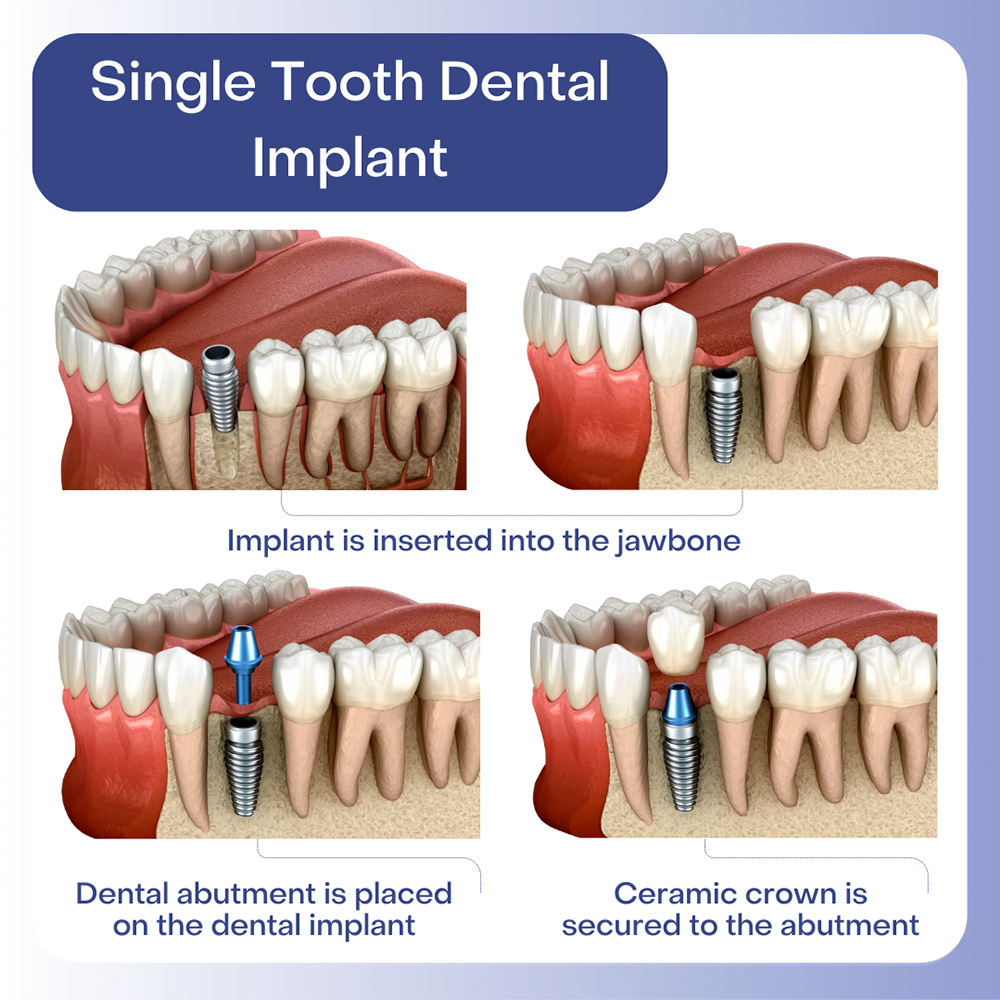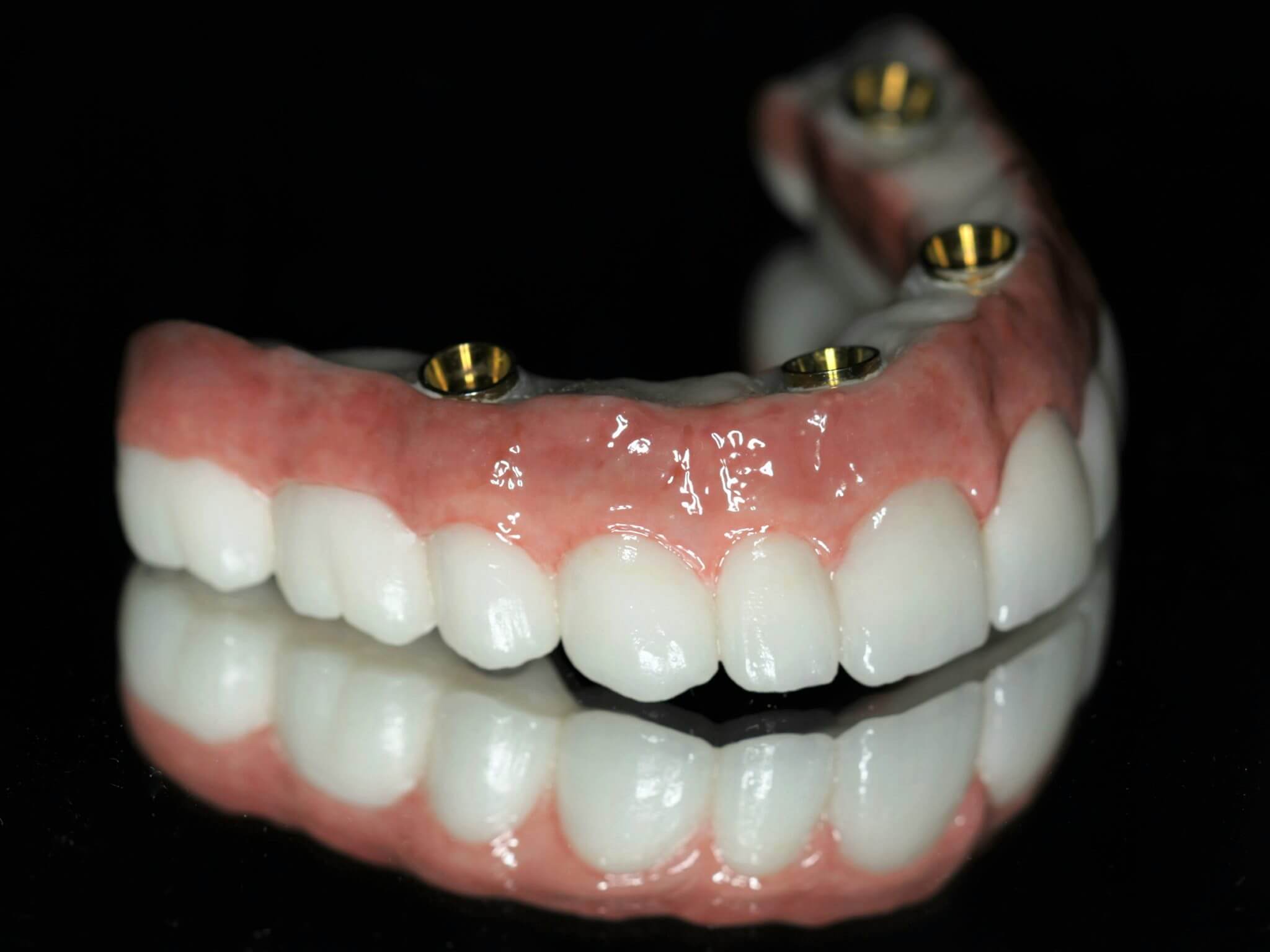The 10-Second Trick For Dental Sense
The 10-Second Trick For Dental Sense
Blog Article
What Does Dental Sense Do?
Table of ContentsAbout Dental SenseThe Facts About Dental Sense RevealedRumored Buzz on Dental SenseAbout Dental Sense
are medical devices surgically implanted into the jaw to restore a person's ability to chew or their look. They give support for synthetic (fake) teeth, such as crowns, bridges, or dentures. When a tooth is shed because of injury or illness, a person can experience issues such as quick bone loss, malfunctioning speech, or adjustments to chewing patterns that cause discomfort.Oral dental implant systems contain an oral implant body and oral implant joint and may additionally consist of an abutment fixation screw. Dental implant vs bridge. The dental implant body is operatively inserted in the jawbone instead of the tooth's origin. The oral implant abutment is normally affixed to the dental implant body by the abutment fixation screw and prolongs with gum tissues right into the mouth to sustain the affixed artificial teeth
(https://www.gaiaonline.com/profiles/dentalsense1/46992240/)Framework of The Oral Implant System choosing dental implants, talk to your oral supplier regarding the possible advantages and threats, and whether you are a candidate for the treatment. Points to think about: Your total health is a crucial consider establishing whether you are a good prospect for dental implants, how much time it will take to heal, and the length of time the dental implant may stay in area.
Smoking cigarettes may affect the healing process and reduce the lasting success of the implant. The recovery procedure for the dental implant body might take a number of months or longer, throughout which time you generally have a temporary abutment in location of the tooth. the dental implant procedure: Very carefully comply with the oral hygiene guidelines provided to you by your oral provider.
Fascination About Dental Sense
Implant failure can cause the requirement for one more surgery to repair or replace the implant system. Recovers the capacity to chew Restores cosmetic look Assists keep the jawbone from reducing as a result of bone loss Maintains the health and wellness of the bordering bone and periodontals Aids keep adjacent (neighboring) teeth stable Boosts lifestyle Damages to surrounding natural teeth during dental implant positioning Injury to the surrounding tissues during surgical treatment, such as sinus perforation Injury during surgery (as an example, crack of surrounding jawbone) Insufficient feature, such as feeling like the teeth do not bite with each other typically A feeling that the tooth hangs or turning in place resulting from an abutment screw loosening up Implant body failing (looseness of the implant body) as a result of systemic infection, which may be more probable in individuals with unrestrained diabetes as a result of regional infection in bone and gums supporting the dental implant body because of postponed healing, which might be more probable in people who smoke Difficulty cleansing the gums around the implant, leading to inadequate dental hygiene Unattended gum illness Post-surgical numbness because of nerve impingement or damages Constantly notify wellness treatment providers and imaging specialists that you have oral implants before any magnetic resonance imaging (MRI) or x-ray procedures.
FDA is not knowledgeable about any type of damaging events reported for MRI or x-ray treatments with dental implants. Dental implants systems are normally constructed from products that follow international consensus requirements of the International Company for Standardization (ISO) or ASTM International. These requirements have details of what makes a safe material.

An oral implant is a structure that changes a missing tooth. With screw-like gadgets, the cosmetic surgeon inserts an implant right into the jawbone, and it acts as a support for a fabricated tooth, called a crown.
Rumored Buzz on Dental Sense
Some people are not eligible for dental implant surgical treatment. It is for dental surgeons to operate on individuals with: intense illnessuncontrollable metabolic diseasebone or soft cells disease or infectionIf these issues are solved, a person can have the surgical procedure. In, dental cosmetic surgeons avoid operating on people with: If individuals with any one of the above go through dental implant surgical procedure, there is a greater threat of the dental implant falling short.

Dental implant surgical treatment is a tailored process. It's not the same for every person. But the following offers a basic review of what you can anticipate your dental practitioner, oral doctor, periodontist or prosthodontist to do: Place the dental implant surgically. Offer you time to heal. Affix the message and last crown, bridge or denture.
Next off, your surgeon will thoroughly put the oral implant into your jaw. If your dental implant is near the front of your mouth, your dental practitioner will certainly make a momentary tooth for you to use up until you heal.
The Best Strategy To Use For Dental Sense
Your supplier can inform you what to expect in your situation. Throughout the recovery stage, your jawbone ought to fuse to the dental implant. This process, called osseointegration, is critical for security and long-lasting success. This procedure can take anywhere from three to nine months. In some situations, it may take much longer.
When your dental implant heals, your dental expert can connect the abutment (little connector post) and your final restoration (crown, bridge or denture). This normally takes concerning one hour to finish and may require a 2nd minor surgery. You should not feel any kind of discomfort during your oral implant treatment due to the fact that your company will make use of drug to numb your periodontals.
Report this page